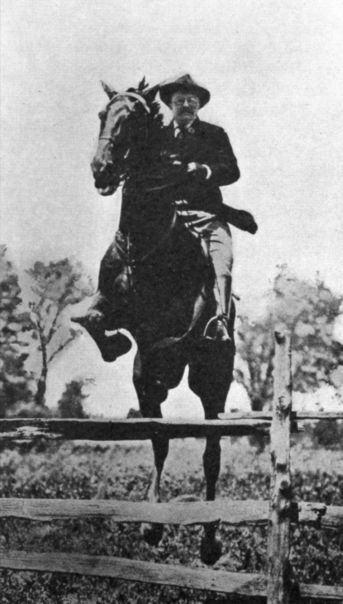|
Speculative impressions from a speculative Iroquois performer:
On December 30, 1903,
orchestra musicians for a musical variety show had an
afternoon gig at Chicago's newest playhouse, the Iroquois
Theater on Randolph St. With the Christmas holiday coming to an
end in two days, the matinee performance of
Mr. Bluebeard had attracted a packed house of families,
enjoying a last celebration before school restarted. It was one
of
Klaw & Erlanger's big shows with hundreds of performers,
lots of lights, and even aerial dancers.
The second act had just begun, and on stage
eight couples, dancing and singing. The tune was a light
Jerome and Woodward tune,
In the Pale Moonlight. Other than it being hard to see,
what with the stage in near darkness to look like a moonlit
garden, it was usually uneventful. The next number with
Eddie Foy and his elephant would be more lively and
challenging. There were a number of sound effects timed to the
act, and audiences loved it, especially children, and there were
more of them today than he'd seen in prior performances. It
reminded Otto of his daughter, Ruth.
His first hint that something was amiss came when he heard a
slight faltering in the dancer's footsteps and voices. Otto kept
playing his flute but turned in his seat to look over his right
shoulder toward the stage. He saw the source of the problem
immediately. Curtains at the top right of the proscenium arch
were on fire, and the flames were rapidly traveling across the
width of the stage.
In the next fifteen minutes nearly six hundred people would die,
including Otto. Nothing is known about his last minutes.
|
|
|
Thirty-seven-year-old Otto H. Helms taught flute at the Chicago Conservatory of
Music. It is conjecture that he was in the Iroquois
orchestra. Though his name was listed in Iroquois
Theater victim lists, none mentioned that he was a
musician. Nothing was reported about a theater
companion, however. If he was in the orchestra,
given the attention given to Nellie Reed, the aerial
dancer who lost her life in the fire, it's odd
newspapers didn't mention his connection to the
performance.
He married in 1895, but in 1900 he and his family —
wife Alma Campe Helms (1874–1945) and only child, a
daughter named Ruth Helms (1897–1960) — were living
apart. Alma and Ruth lived with Otto's parents, and
Alma was described in the U.S. Census as widowed, a
common description in an era when divorce was
verboten. On the other hand, there is evidence that
he suffered from some sort of mental illness (see
below) that might have caused temporary marital
disruptions. At the time of his death, they seemed
to have reconciled.
Otta was the son of German immigrants Christine and
Christian Helms, both deceased before his death. He
had eight siblings, one of whom, Walter, identified
his body after the Iroquois Theater fire.
Otto was buried in Wonder's Cemetery in Chicago with his parents. On January 3,
1904, his funeral was attended by brothers in his
Garden City Freemasons Lodge #141.
Music was the family business
In becoming a musician, he followed in the footsteps of his father and older
brothers — Christ, a bass trombone player, and
Richard, who played the double bass. In addition to
teaching flute at the Chicago Conservatory of Music
and Dramatic Art at the Auditorium,* he performed in
various amateur orchestra and chamber music groups,
including the Chicago Symphony Orchestra. In city
directories, he was listed as a music teacher.
Arrested for threatening Teddy Roosevelt
Six months prior to the Iroquois Theater fire, Otto was arrested for sending
threatening letters to president Theodore Roosevelt
and underwent a sanity hearing. The report was
brief, only saying that it involved a $20,000
insurance dispute. He wanted to debate with the
president.
To newspapers insisted he meant no harm to the
president. He was sent to the hospital
for the insane in Elgin but six months later had
apparently been released. His three brothers
may have helped. I found no evidence of a
second Otto Helms in Chicago in 1903 but did find
two other Alma's. Otto had a sister named Alma
and one of his brother's also married an Alma.
|

|

Teddy
In the years after the fire
Otto's widow didn't have a knack for picking husbands. Alma remarried in
1906 to Charles Putnam, an officer in Newell-Putnam
Manufacturing, a button company, but four years
later sued for divorce, accusing him of cruelty.
Daughter Ruth, then nine years old, testified about
her stepfather dragging her mother from one room to
another by the hair and severely bruising her
mother's arm in another altercation. Putnam
protested that Alma was a battle-ax, but the judge
granted Alma a divorce.
Ruth graduated from a
private girls school, Milwaukee-Downer Seminary in
Milwaukee, and attended Northwestern for three
years. In 1919 she married her first husband, film
and radio star
Conrad Nagel (1897–1970), making her one of his
three wives. A pretty girl with vocal skills, Ruth
appeared in one silent film in 1920. She, Alma, and
her daughter by Nagel traveled Europe in the
1920s. She next married film director/producer
Franklin Sidney.
|
